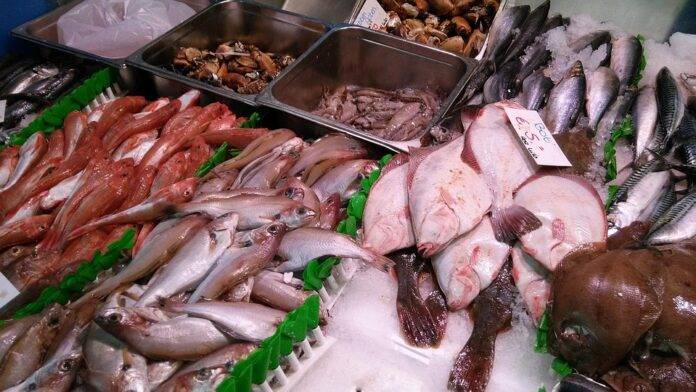The Importance of Sustainable Seafood
Sustainable seafood refers to fish and seafood products that are sourced in a way that ensures the long-term health and stability of marine ecosystems. With the increasing demand for seafood worldwide, overfishing and unsustainable fishing practices have become major concerns.
Current State of the Global Seafood Industry
According to a report from the Food and Agriculture Organization of the United Nations (FAO), global seafood consumption has been steadily increasing over the past few decades. In 2018, global seafood production reached a record high of 179 million tonnes, with Asia being the leading producer.
Challenges Faced by the Seafood Industry
Despite the growing demand for seafood, the industry is facing several challenges, including overfishing, illegal fishing, habitat destruction, and climate change. These issues not only threaten the health of marine ecosystems but also jeopardize the livelihoods of millions of people who depend on fishing for their income.
Top 10 Government Initiatives Supporting Sustainable Seafood
1. Marine Stewardship Council (MSC)
The MSC is a global nonprofit organization that sets standards for sustainable fishing practices and certifies fisheries that meet these standards. The MSC label can be found on seafood products in supermarkets and restaurants around the world, giving consumers the assurance that the fish they are buying has been sourced sustainably.
2. Seafood Watch Program
The Seafood Watch Program, run by the Monterey Bay Aquarium in the United States, provides consumers and businesses with recommendations on which seafood products are environmentally friendly and sustainable. The program categorizes seafood into three categories: “Best Choices,” “Good Alternatives,” and “Avoid.”
3. Aquaculture Stewardship Council (ASC)
The ASC is an independent nonprofit organization that sets standards for responsible aquaculture practices. The ASC certifies fish farms that meet these standards, ensuring that farmed seafood is produced in an environmentally and socially responsible manner.
4. European Union Common Fisheries Policy (CFP)
The CFP is a set of regulations governing fisheries management in European Union waters. The policy aims to ensure the long-term sustainability of fish stocks, reduce discards, and promote environmentally friendly fishing practices. The CFP also includes measures to combat illegal, unreported, and unregulated (IUU) fishing.
5. United States National Oceanic and Atmospheric Administration (NOAA) Fisheries
NOAA Fisheries is responsible for managing marine fisheries in the United States. The agency works to prevent overfishing, rebuild depleted fish stocks, and protect marine habitats. NOAA Fisheries also conducts research to improve our understanding of marine ecosystems and inform fisheries management decisions.
6. Marine Protected Areas (MPAs)
MPAs are designated areas of ocean where fishing and other extractive activities are restricted or prohibited. These areas help protect marine biodiversity, restore fish populations, and preserve critical habitats. MPAs are an important tool for sustainable fisheries management.
7. Sustainable Development Goals (SDGs)
The United Nations’ Sustainable Development Goals include targets related to sustainable fisheries and marine conservation. Goal 14, “Life Below Water,” calls for the conservation and sustainable use of oceans, seas, and marine resources. Governments around the world are working towards achieving these goals through various initiatives and policies.
8. Traceability and Transparency Initiatives
Many governments are implementing traceability and transparency initiatives to ensure that seafood products are sourced legally and sustainably. By tracking the entire supply chain from ocean to plate, authorities can prevent illegal fishing and seafood fraud, and provide consumers with information about the origin of their seafood.
9. Fisheries Improvement Projects (FIPs)
FIPs are collaborative efforts between governments, industry, and NGOs to improve the sustainability of fisheries. These projects aim to address specific challenges facing fisheries, such as overfishing, by implementing best practices and management measures. FIPs help fisheries transition towards sustainability and achieve certification from organizations like the MSC.
10. International Agreements and Treaties
Many countries are part of international agreements and treaties aimed at promoting sustainable fisheries and protecting marine biodiversity. Examples include the United Nations Convention on the Law of the Sea (UNCLOS), the Agreement on Port State Measures to Prevent, Deter and Eliminate Illegal, Unreported and Unregulated Fishing (PSMA), and the Convention on Biological Diversity (CBD). These agreements provide a framework for cooperation on marine conservation and sustainable resource management.
In conclusion, government initiatives play a crucial role in promoting sustainable seafood and ensuring the long-term health of marine ecosystems. By implementing policies and programs that support responsible fishing practices, governments can help address the challenges facing the seafood industry and protect the oceans for future generations. Consumers can also contribute to sustainability by choosing seafood products that are certified as sustainable and supporting businesses that prioritize environmental stewardship.



